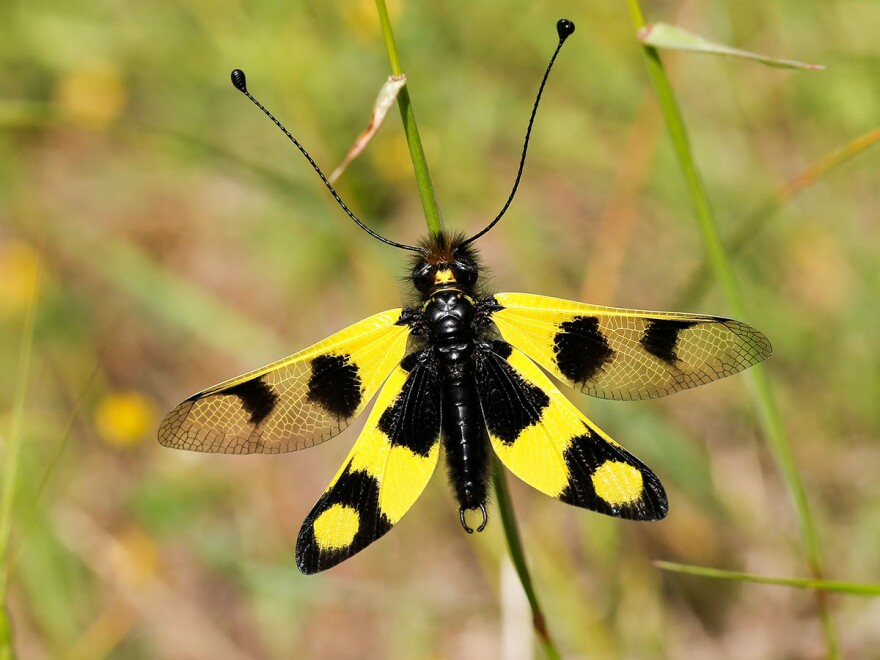Owlflies first appeared in the fossil record during the late Jurassic period, about 150 million years ago. They look like a cross between a butterfly and a dragonfly and are often mistaken for the latter.
They are extremely fast-flying insects with long antennae clubbed at the tip like a butterfly. Adult owlflies are aerial predators and catch insects on-the-wing. They get their name because their eyes are very large and owl-like, bulging out from their heads. They’re so fast that they’re difficult to see until they land.
Present-day owlflies are abundant in the tropics, but they occur in temperate climates, too. There are eight different species in North America, one of which lives on the Colorado Plateau. Historically, they’ve been spotted at Walnut Canyon National Monument, but it’s been more than 50 years since there’s been a documented sighting. The Hopi, and other tribes in Northern Arizona, have been known to illustrate their pottery with owlfly designs, as have modern day artists.
Between their speed and their elusiveness, you’re lucky if you ever catch a glimpse of an owlfly. And if you do, you will have witnessed one of the most interesting insects on the Colorado Plateau.








